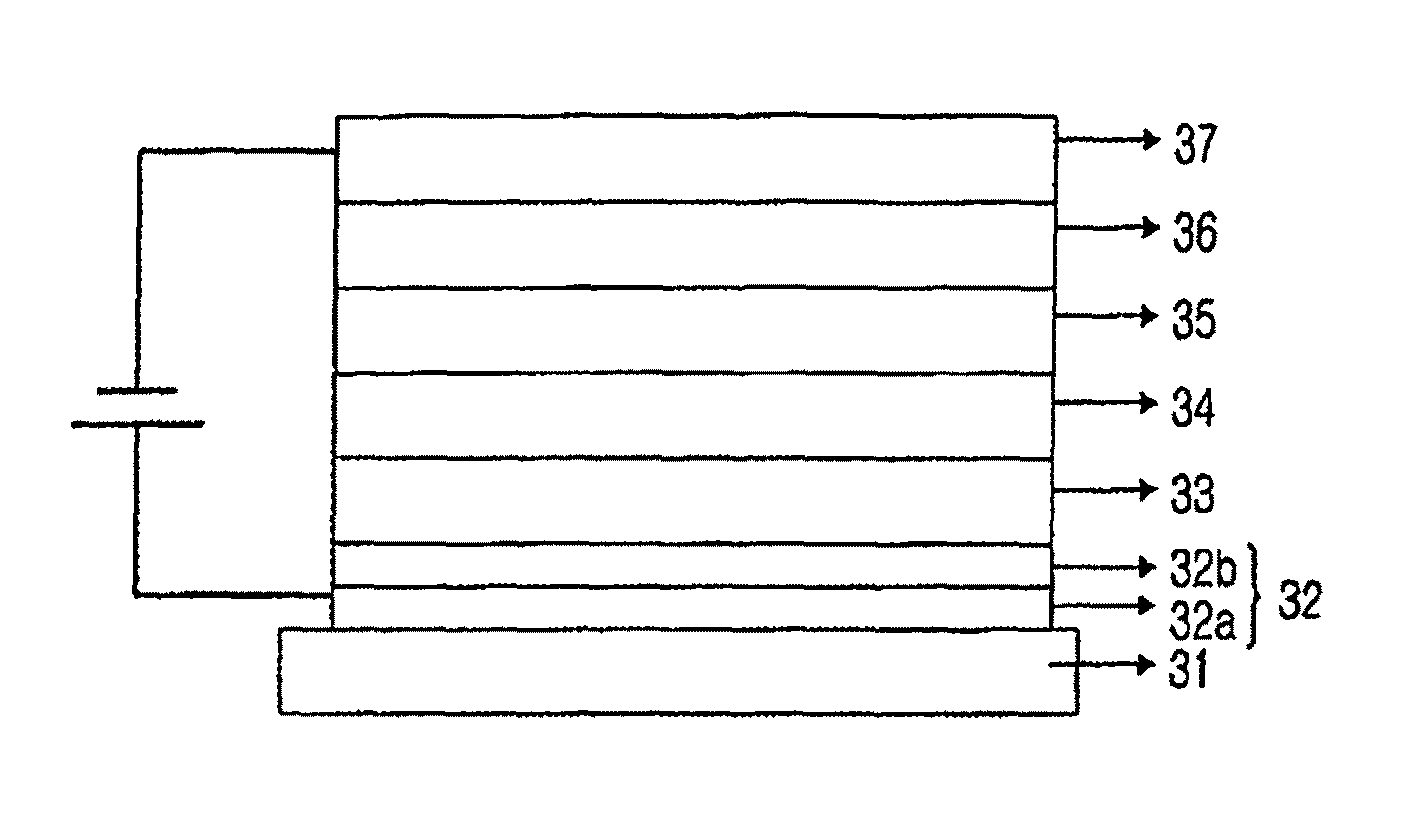Organic light emitting device and method for manufacturing the same
a light-emitting device and organic compound technology, applied in the direction of discharge tube/lamp details, discharge tube luminescent compositions etc., can solve the problems of affecting the performance of the device, the instability of the interface between the electrode formed of metal, metal oxides or conductive polymers and the organic compound layer, and the inability to select a material for the hole injection layer, etc., to achieve excellent device performance, efficiency, luminance, or driving voltage
- Summary
- Abstract
- Description
- Claims
- Application Information
AI Technical Summary
Benefits of technology
Problems solved by technology
Method used
Image
Examples
example
Example 1
[0094]Measurement of HOMO and LUMO Energy Levels of HAT using UPS and UV-VIS Absorption Methods
[0095]Hexanitrile hexaazatriphenylene (HAT) was used as the organic material having n-type semiconductor characteristics. In order to measure the HOMO level of HAT, a UPS (Ultraviolet photoelectron spectroscopy) method was used. In the method, kinetic energy of electrons that are discharged from a sample when vacuum UV rays (21.20 eV) emitted from the He lamp are radiated onto the sample in a ultravacuum (0 to 8 torr) is analyzed to detect a work function of metal, or to detect ionization energy of organic material, that is, the HOMO level and the Fermi energy level. That is, the kinetic energy of electrons that are discharged from the sample when the vacuum UV rays (21.20 eV) are radiated onto the sample is a difference between 21.2 eV that is vacuum UV energy and electron binding energy of the sample to be measured. Accordingly, a binding energy distribution of molecules in the...
example 2
[0099]A glass substrate (Corning 7059 glass) on which an ITO (indium tin oxide) was applied to a thickness of 1000 Å was put in distilled water where a detergent (Manufacturing company: Fischer Co., and Product No.: 15-335-55) was dissolved to perform washing using ultrasonic waves for 30 min. Subsequently, the glass substrate was put in distilled water to repeat ultrasonic washing for 5 min twice.
[0100]Once the distilled water washing was finished, the glass substrate was subjected to ultrasonic washing sequentially using isopropyl alcohol, acetone, and methanol solvents one by one, and then dried. Subsequently, the glass substrate on which ITO was applied was subjected to plasma treatment using a nitrogen plasma in the plasma washing machine at pressure of 14 mtorr under powder condition of 50 W for 5 min. The work function of the surface treated ITO anode was about 4.8 eV.
[0101]Subsequently, the glass substrate on which ITO was applied was subjected to plasma treatment using an o...
PUM
 Login to View More
Login to View More Abstract
Description
Claims
Application Information
 Login to View More
Login to View More - R&D
- Intellectual Property
- Life Sciences
- Materials
- Tech Scout
- Unparalleled Data Quality
- Higher Quality Content
- 60% Fewer Hallucinations
Browse by: Latest US Patents, China's latest patents, Technical Efficacy Thesaurus, Application Domain, Technology Topic, Popular Technical Reports.
© 2025 PatSnap. All rights reserved.Legal|Privacy policy|Modern Slavery Act Transparency Statement|Sitemap|About US| Contact US: help@patsnap.com



